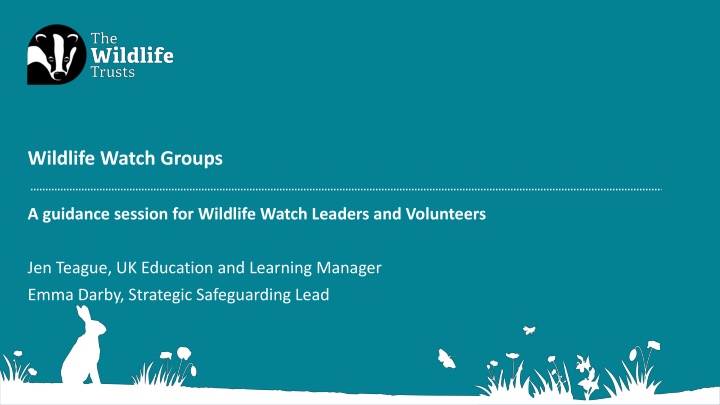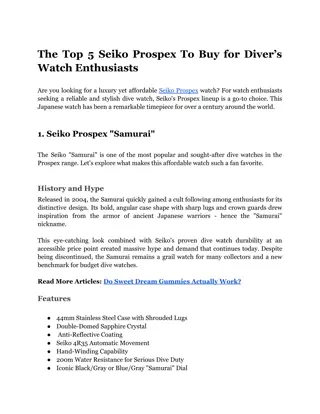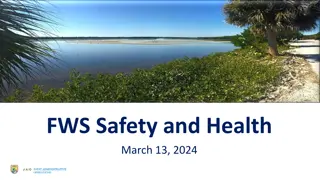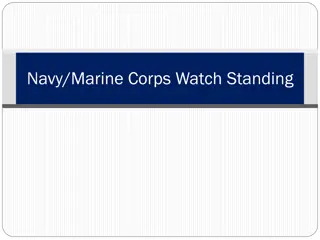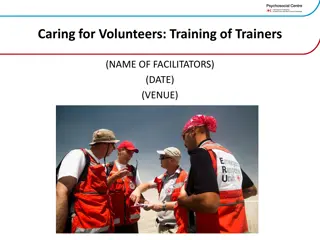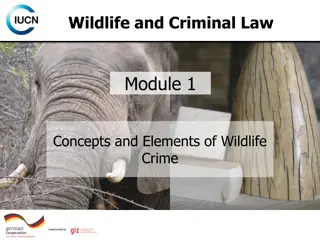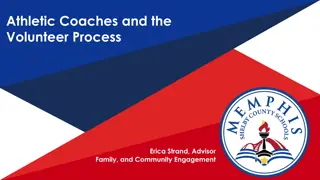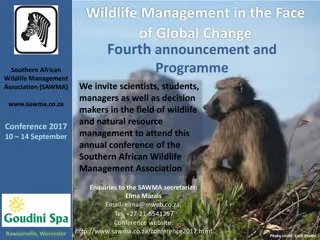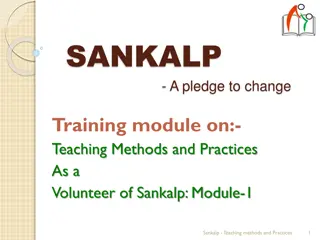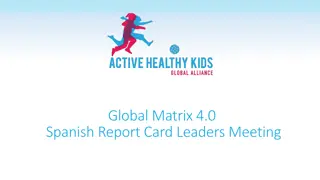Wildlife Watch Groups Guidance Session for Leaders and Volunteers
Update session for Wildlife Watch Group leaders and volunteers on centralised support, safeguarding, teaching standards, and learning content. Topics include recent changes, experiences of leaders, principles of Watch Groups, safeguarding legislation, child abuse recognition, teaching standards, and Mentimeter exercise.
Download Presentation

Please find below an Image/Link to download the presentation.
The content on the website is provided AS IS for your information and personal use only. It may not be sold, licensed, or shared on other websites without obtaining consent from the author.If you encounter any issues during the download, it is possible that the publisher has removed the file from their server.
You are allowed to download the files provided on this website for personal or commercial use, subject to the condition that they are used lawfully. All files are the property of their respective owners.
The content on the website is provided AS IS for your information and personal use only. It may not be sold, licensed, or shared on other websites without obtaining consent from the author.
E N D
Presentation Transcript
Wildlife Watch Groups A guidance session for Wildlife Watch Leaders and Volunteers Jen Teague, UK Education and Learning Manager Emma Darby, Strategic Safeguarding Lead
Purpose Purpose To update leaders and facilitators of Wildlife Watch Groups on developments in centralised support
Content for the session: Current position of Watch Groups/recent changes Your experiences of being a Watch Leader Principles of Watch Groups Next steps CPD Session 1: Safeguarding Safeguarding (including legislation and Charity Commission expectations) Case study group work Types of child abuse and how to recognise them
Teaching and Learning in Watch Groups Big changes to the comms team at RSWT Re-brand and updating existing materials Watch website review Wildnet access for group leaders Review of awards and activities
Helping Watch Groups get to a safer, more Helping Watch Groups get to a safer, more sustainable place sustainable place People to talk to in the central team Space to connect and network Ideas, resources, support to continuously improve Governance, the non-negotiables, and how we can help
Teaching and Learning in Watch Groups Minimum Standards Expectations of staff and volunteers Preparedness and risk management Quality of delivery and content Impact and meaningfulness of activities
Mentimeter exercise (ten minutes) Google: www.menti.com Enter code: 6720 4517
Teaching and Learning in Watch Groups: learning content Current guidance states that all Wildlife Watch activity is underpinned by five principles: 1. Creating factual, informal, fun ways to investigate our surroundings 2. Increasing understanding of our whole environment 3. Fostering awareness and feeling for the world we live in 4. Encouraging a caring attitude towards wildlife and participation in conservation 5. Ensuring that young people s environmental concerns, ideas and opinions are recognised and developed, and that opportunities are created to act upon them
Jamboard exercise (ten minutes) https://jamboard.google.com/d/1zcH58fHGpgehmDYm0LldWS1W vpBUoIHDbHjp-S6t69E/edit?usp=sharing Purpose and principles
Wildlife Watch Groups CPD Session 1: Safeguarding
UK Legislation in place to Safeguard Children and Adults at Risk and the Charity Commission are all very clear that as an organisation and federation, we carry this responsibility: Protecting people and Safeguarding responsibilities should be a governance priority for all charities. It is a fundamental part of operating as a charity for the public benefit (Charity Commission, November 2022).
How does this apply to the Wildlife Trusts? Any organisation offering activities to children, young people and adults has a legal and moral duty to safeguard the children, young people and adults with whom it works. This means doing everything we can to reduce the risk of a child, young person or adult coming to harm while in our care, and knowing what to do if we believe they may be suffering from harm caused outside our setting
Group work breakout session 1) What are the different types of child abuse we need to be aware of? 2) What signs might we see if a child is being abused or neglected?
Other areas to consider for children https://www.nspcc.org.uk/what-is-child- abuse/types-of-abuse/ (for more information)
Safeguarding what do Group Leaders need to know? Induction Familiarisation with Trust Designated Safeguarding Lead and Safeguarding Policy and Procedure Safeguarding training equivalent to the training Trust staff have who work with children Who to contact if they have a concern What happens out of hours Risk assessments / codes of conduct Contact with participants outside of sessions and healthy boundaries
Keeping in touch Social media Protecting our volunteers and creating boundaries Taking and storage of photos and videos / consent Online chats Live sessions/webinars
